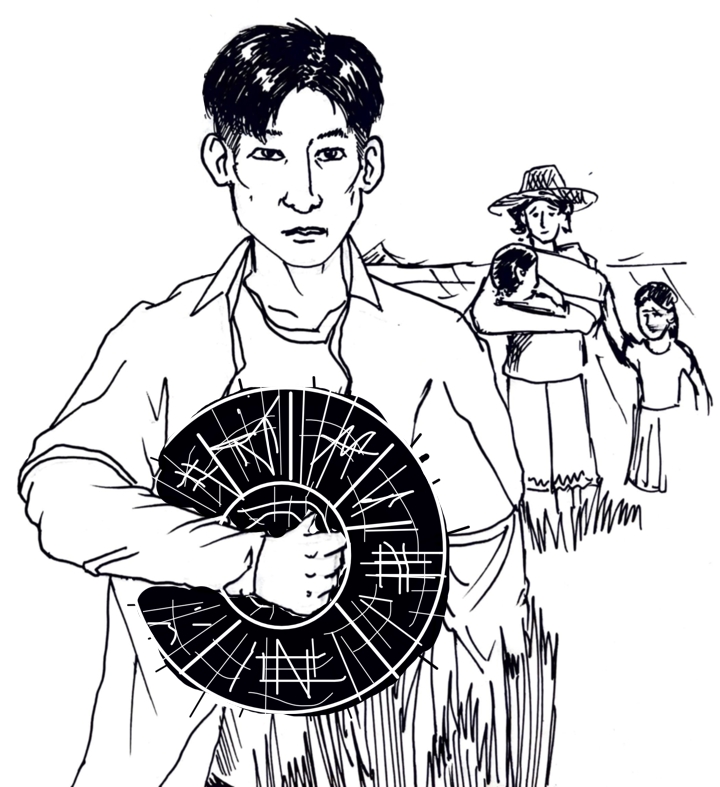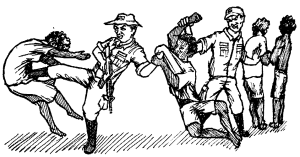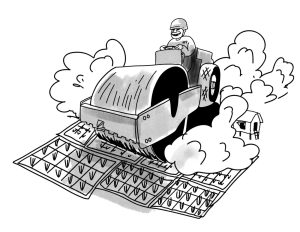Tiempo muerto amid inflation and climate change


Sugar plantation farmworkers annually suffer from tiempo muerto, “dead season” in Spanish, the months between sugarcane planting cycles. This usually lasts from June to September when “kampos” offer no jobs. In Negros, this is called “tigkiwiri” or season of suffering for 300,000 farmworkers and their families. This year, their suffering is worse amid skyrocketing prices of commodities, calamities resulting from climate change and intense militarization.
Among them is 35-year-old Derek, married with three toddlers. He and his wife earns ₱400 for working eight hours daily in various farms. Despite day-long toiling, their earnings are grossly insufficient for rice, meals, milk, and their children’s other needs. To survive, the couple “sidelines” in copra work. Like other farmworkers, they are mired in debt in their attempt to live by the most basic needs of their family.
“It’s worse this year, especially with higher prices,” Derek says. “Instead of three, we only have two daily meals at times.” Children’s growth are most severely affected. State data indicates 40% of children 5-years and below in Negros Oriental are stunted. Stunted growth is an indication of severe malnutrition.
Poverty hasn’t change, Aling Mali meanwhile asserts. Even if there was work, daily wages are only at ₱150. “Our earnings remain the same but expenses constantly increase. We have no choice but to get one loan after another.” More often, their measly income go only to pay off debts.
This is not surprising given that Negros inflation is one of the highest nationwide. Last July, inflation rates registered 6.1% in Negros Occidental, and 4.1% in Negros Oriental. Prices of food and beverages are constantly rising.
Their difficulties were worsened further by incessant rains after a series of storms and southwest monsoon ravaged fields.
Contrary to threats of El Niño or drought, Derek said “more frequent rains caused by consecutive storms have damaged corn and sugarcane fields.” At the end of July, typhoon Egay rampaged through the island resulting in ₱46.7 million damages to crop, fish ponds and livestock in Negros Occidental alone. By the end of August, storm Goring hit causing ₱125.59 million worth of damages in the province.
In fact, Negros farmworkers endure year-round hunger because of their slave-like wages. According to the National Federation of Sugar Workers, farmworkers are often paid around ₱1,500 weekly or ₱300 daily, lower than the daily minimum wage mandated by law and much lower than living wages. Even lower are wages under the pakyawan (lump sum) system where big landlords pay ₱4,000-₱5,000 to a team of 4-8 people (₱625 per person) for a 5-6 day work.
In previous years, Negros farmworkers actively demanded the government to extend financial assistance during tiempo muerto, as well as in times of calamity. At the same time, they are fighting for a ₱150 increase in daily wages and 50% increase in pakyawan rates. They support the call for ₱750 across the board wage increase on a nationwide scale.
According to farmers, only by the dismantling the haciendas and ending the exploitation of farmworkers by a few landlords who make millions in profit, will put an end to the annual tiempo muerto. Distributing land to tillers and focusing on food production will ensure food security for hundreds of thousands of families.
“Tiempo muerto will constantly be a season of hunger and death to sugar farmworkers until the fundamental problem of landlessness in the country is addressed,” they say.











